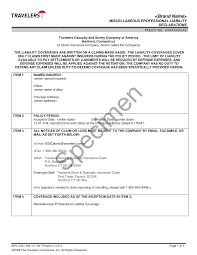
Understanding the basics of pet insurance is essential before you buy. The basic concept is that you pay a deductible. These deductibles must be met every year and are usually annual. Some companies, however, have a "per-condition deductible." You will need to pay a new deductible each time your pet gets a new condition.
Insurance doesn't cover pets with pre-existing medical conditions
Some medical conditions, such as certain types of cancer, may not be covered by pet insurance. This is because some of these conditions are not curable. A pet with a diagnosed condition like this will likely need medical treatment throughout its entire life. Even though pet insurance may not cover such conditions, payment assistance is available to help with treatment costs.
Some plans provide coverage for pre-existing conditions. However, they do not cover conditions that may develop in the future. It is important that you shop around for the best coverage. You should also sign up for pet insurance as soon as you can - before your pet gets sick!

Annual deductibles
When shopping for pet insurance, it is important that you understand your deductible. These amounts vary from company to company, and you should consider the deductible amount that is right for your particular situation. The annual deductible can be anywhere from $50 to $1,000. Some companies let you choose a zerodeductible option. This allows you only to pay the monthly premium.
An annual deductible is an amount that you must pay each year to receive reimbursement for your pet's health bills. For example, if you choose to pay a $500 deductible on your pet's insurance policy, you must pay that amount out of pocket each year before your insurance provider will reimburse you. This may seem like a lot, but it's important to remember that annual deductibles are usually cheaper than per-incident ones.
Rates of reimbursement
It is important to understand the reimbursement rates when purchasing pet insurance. These rates are based on the percentage of vet bills covered by your plan. Two methods can be used to calculate reimbursements. The pre-deductible method is used while the post-deductible method is used.
Pet insurance policies usually do not cover all costs associated with veterinary care. Your pet's medical costs are your responsibility. You will only be reimbursed for reimbursement rates. Depending on what plan you choose, you could be responsible up to 10%-30% of the bill. You could be responsible for hundreds of dollars in bills if you don't have pet insurance.

Limitations of coverage
When shopping for pet insurance, it's important to understand the limits and exclusions for certain types of coverage. Many policies have an annual maximum coverage limit. Your pet won't receive any further benefits until that year. However, some companies offer "unlimited" plans that do not have an annual limit.
It is possible for pets to have varying levels of coverage depending on their age and personalities. For example, a pet that is younger may be more likely to get into accidents than one that is older and more active. Senior pets could also be at higher risk of certain health conditions like cognitive decline or cataracts. You should also consider your pet's breed as certain breeds are more susceptible to certain diseases.